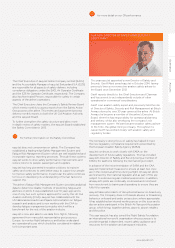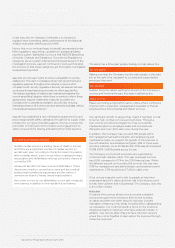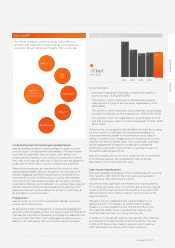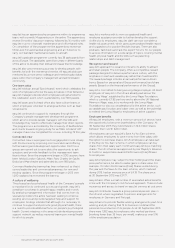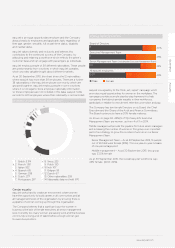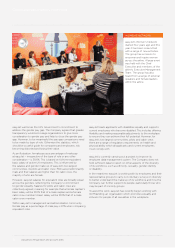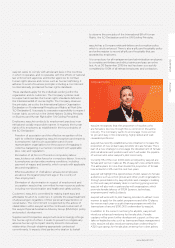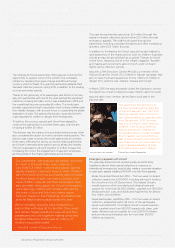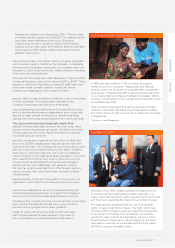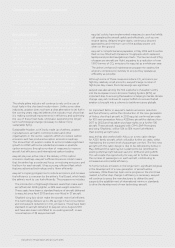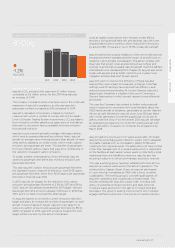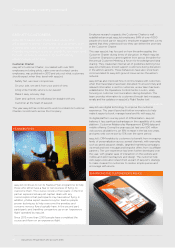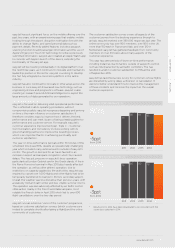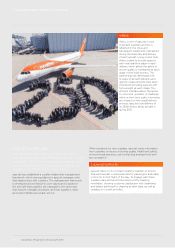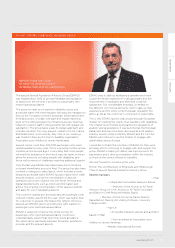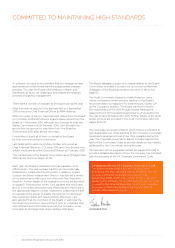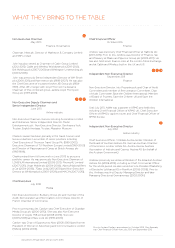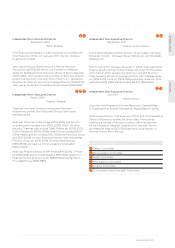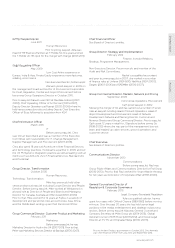EasyJet 2015 Annual Report Download - page 45
Download and view the complete annual report
Please find page 45 of the 2015 EasyJet annual report below. You can navigate through the pages in the report by either clicking on the pages listed below, or by using the keyword search tool below to find specific information within the annual report.
Strategic report Governance Accounts
41
www.easyJet.com
easyJet's CO2 emissions
easyJet's CO2 emissions this year were 6.1 million tonnes,
compared to 5.9 million tonnes for the 2014 financial year,
an increase of 3.4%.
The increase in overall emissions has been due to the continued
expansion of easyJet's operations, as this year easyJet's
passenger numbers increased by 6% compared to 2014.
easyJet's calculation of emissions is based on fuel burn
measurement, which is verified to comply with the European
Union's Emission Trading System requirements. CO2 equivalents
from emissions of other greenhouse gases are not included as
there are no conversion factors available for these emissions
from aircraft fuel burn.
easyJet's route network primarily overlaps with legacy airlines,
which tend to operate older and less efficient fleets. easyJet
aircraft on average carry more passengers than aircraft of many
other airlines operating on similar routes, which means carbon
emissions per passenger are lower. This transfer of passengers
from less efficient airlines means that easyJet is contributing to
the reduction of aviation carbon emissions.
To obtain a better understanding of how efficiently easyJet
carries its passengers the airline also monitors emissions per
passenger kilometre.
This year easyJet's carbon emissions per passenger kilometre,
the standard industry measure of efficiency, were 81.05 grams
per passenger kilometre, down from 82.03 grams per passenger
kilometre in financial year 2014.
In 2013, easyJet set targets for the reduction of its carbon
emissions per passenger kilometre of 2.5% by 2017 and 5% by
2022. easyJet has already exceeded the 2017 target, with per
passenger kilometre emissions already 3.2% lower in 2015 than
2013, and is on track to exceed the 2022 target.
As easyJet expects to exceed its current emissions reduction
target and plans to increase the number of passengers on each
aircraft, it has increased its target. easyJet's new target is to
reduce its carbon emissions per passenger kilometre by 8% by
2020 compared to 2013. easyJet's progress towards this new
target will be overseen by the airline's Fuel Board.
Local air quality
Local air quality impact arises from nitrogen oxides (NOx)
emissions during aircraft take-offs and landings. easyJet's new
engines feature a tech insertion which reduces NOx emissions
by around 25%. These are in use in 67.8% of easyJet's aircraft.
Noise
easyJet wants to be a good neighbour in the communities around
the airports where it operates and the impact of aircraft noise on
residents is an important consideration. The airline complies with
local rules that govern noise at airports (such as curfews and
routings to avoid built-up areas). easyJet aircraft meet the tightest
international noise standards (ICAO Chapter 4). easyJet also works
locally with airports and air traffic control to put in place noise
mitigation activities that best fit each airport.
easyJet's work to improve the efficiency of flying has also
reduced the noise impact. For example, a change in the flap
settings used for landings has improved fuel efficiency and
reduced noise levels at landing. At London Gatwick, easyJet's
largest base, the airline is a leader in the use of Continuous
Descent Approaches in which aircraft descend more efficiently
and quietly.
This year the Company has worked to further reduce aircraft
noise in response to comments from local residents about the
A320 family aircraft of all airlines, particularly at London Gatwick.
All new aircraft delivered to easyJet since June 2014 are fitted
with 'vortex generators' to prevent a particular sound due to
airflow under the wing. From November 2015 easyJet will begin
an engineering programme to modify 197 existing aircraft with
vortex generators. It expects to complete the programme by
March 2018.
Waste management
easyJet seeks to recycle as much waste as possible. On board,
easyJet has a two-bag waste collection system which separates
recyclable material such as newspapers, plastic bottles and
metal cans from general waste. The airline does not have control
of the final management of on-board waste which is dependent
on the facilities at each airport where waste is collected by local
cleaning and ground handling contractors. easyJet also has
recycling in place in its offices and hangars around its network.
This year a working group has been established to look at how
easyJet can reduce waste across the airline's operations. This
is being led by Captain Stuart Green, an easyJet pilot based
in Luton who has completed an MBA with a focus on airline
sustainability. The working group is considering all aspects of
easyJet's operations and in particular on-board waste. This
includes working with easyJet's supply chain, including with
Airbus on potential on-board solutions and Gate Gourmet
to reduce waste arising from the sale of on board food and
beverages. The group is seeking improvements which will also
engage staff and customers in the process of waste reduction.
20152014201320122011
81.05
83.76
82.03
85.48
84.60
CARBON EMISSIONS PER PASSENGER KILOMETRE (G)
-1.2%
from 2014
81.05g


